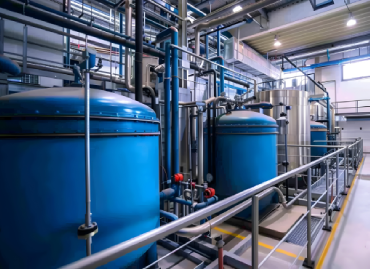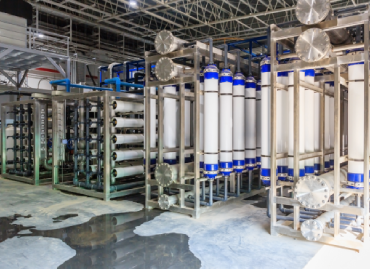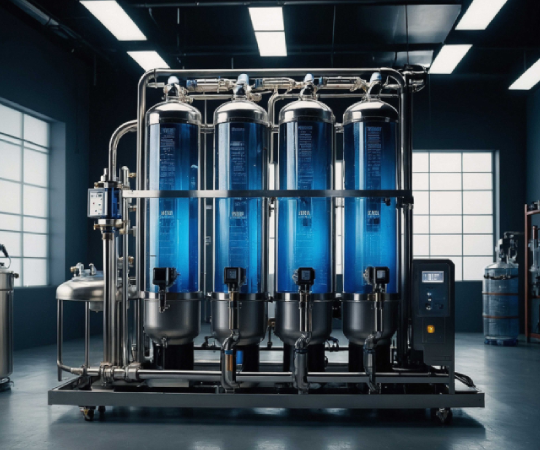- By Admin
- 10 Sep 2025
- WTP Plant
Advanced Water and Wastewater Solutions for Commercial Complexes Ensuring Environmental Sustainability and Operational Efficiency
Commercial complexes, such as office buildings, malls, and retail hubs, have become the cornerstone of urban infrastructure in India. Cities like Mumbai, Pune, Nagpur, and Nashik in Maharashtra are witnessing rapid urbanisation, with commercial hubs emerging to accommodate both businesses and customers. These complexes, which host thousands of people daily, put a tremendous demand on utilities, especially water. With the increasing pressure on water resources, managing this demand sustainably has become crucial for both operational efficiency and environmental responsibility.
"Water is not just a resource; it's the lifeblood of every commercial operation. Efficient water management is not only an investment in sustainability but also in the future of our cities, businesses, and the environment we share. Responsible water use ensures that we leave a cleaner, healthier world for future generations."
The Water Consumption Challenge in Commercial Spaces
In a commercial complex, water is used for various daily activities. Public restrooms, food courts, cleaning operations, and HVAC systems are among the primary consumers of water. During peak hours or on weekends, water usage spikes due to a higher volume of visitors. In addition to these activities, water is also used for exterior cleaning, landscape irrigation, and other maintenance functions. HVAC systems in commercial buildings also rely heavily on water-based cooling towers to maintain temperature control. Given the wide range of uses, the water demand in commercial complexes is substantial, making it essential to address water management at the infrastructure level.


Wastewater Generation in Commercial Complexes
The generation of wastewater is a key concern in managing water resources in commercial spaces. Every day, commercial buildings produce a mix of greywater and blackwater. Public restrooms contribute significantly to blackwater, which contains human waste and pathogens. Food courts and restaurants release grease-laden water along with soaps and detergents, while pantry and cleaning operations add to the greywater load. Moreover, the cooling towers in HVAC systems generate blowdown water, and other activities, such as floor cleaning or exterior washing, lead to wastewater contaminated with chemicals.
Without proper treatment, these wastewater streams can lead to environmental degradation, polluting municipal drainage systems and contaminating local water sources. To mitigate these risks, commercial buildings must adopt robust wastewater management systems that ensure safe treatment, reuse, or disposal.
Efficient Water Treatment Systems: STPs, ETPs, and More
To effectively manage wastewater, many commercial complexes install Sewage Treatment Plants (STPs). These systems work by first screening out large solids, followed by sedimentation to separate sludge. The wastewater is then subjected to advanced biological treatment methods such as Sequential Batch Reactors (SBR) or Moving Bed Biofilm Reactors (MBBR). These technologies break down organic contaminants, making the water safe for reuse in applications like irrigation, toilet flushing, or cooling towers. Post-treatment disinfection using UV or chlorine ensures that any remaining pathogens are eliminated.
In complexes with food courts or restaurants, specialised treatments are required for grease-laden wastewater. Grease Trap Units (GTUs) and Effluent Treatment Plants (ETPs) help manage the oil and grease, preventing it from clogging plumbing and polluting water systems. Additionally, cooling tower blowdown water, which contains dissolved solids and salts, is treated through filtration and chemical balancing to remove harmful contaminants.
Leveraging Modern Technology for Water Reuse
Modern commercial complexes are adopting cutting-edge technologies to improve the efficiency of water treatment and reuse. Compact STP units equipped with Membrane Bioreactor (MBR), SBR, and MBBR technologies are becoming more popular due to their high treatment efficiency in small, space-constrained environments. These systems are also integrated with automation panels that monitor and control parameters like flow rates, dosing, and pH in real-time, ensuring optimal treatment performance.
Furthermore, Reverse Osmosis (RO) filtration systems and multi-grade sand filters are commonly used to purify treated water for HVAC applications and other non-potable uses. By reusing treated water for purposes like landscaping or cooling, commercial complexes can significantly reduce their reliance on municipal water sources, lowering operating costs and promoting sustainability.
Innovative Solutions: Rainwater Harvesting and IoT Integration
Some progressive commercial complexes are incorporating rainwater harvesting systems into their water management plans. These systems capture rainwater and treat it for reuse, creating a closed-loop water cycle. Not only does this reduce the complex's dependency on external water sources, but it also mitigates runoff and waterlogging issues in urban areas.
Additionally, IoT-based monitoring platforms are becoming increasingly popular for tracking the performance of water treatment systems. Sensors placed throughout the system provide real-time data on water quality and system performance. Facility managers can access this data remotely through cloud-based dashboards, ensuring that any potential issues are identified and addressed promptly. This integration of technology improves the efficiency of water treatment systems, ensures compliance with environmental regulations, and enhances operational reliability.
Summary And Conclusion
Effective water and wastewater management is critical for the sustainability and operational efficiency of commercial complexes. The adoption of advanced water treatment solutions, such as STPs, ETPs, and RO systems, helps mitigate the environmental impact of water use while promoting water conservation. Modern technologies, including automation, IoT sensors, and rainwater harvesting, enable commercial buildings to optimise water usage, reduce costs, and enhance their sustainability credentials. By integrating these systems into their infrastructure, commercial complexes not only comply with regulatory standards but also build a responsible, eco-friendly image that resonates with customers and stakeholders alike.































































